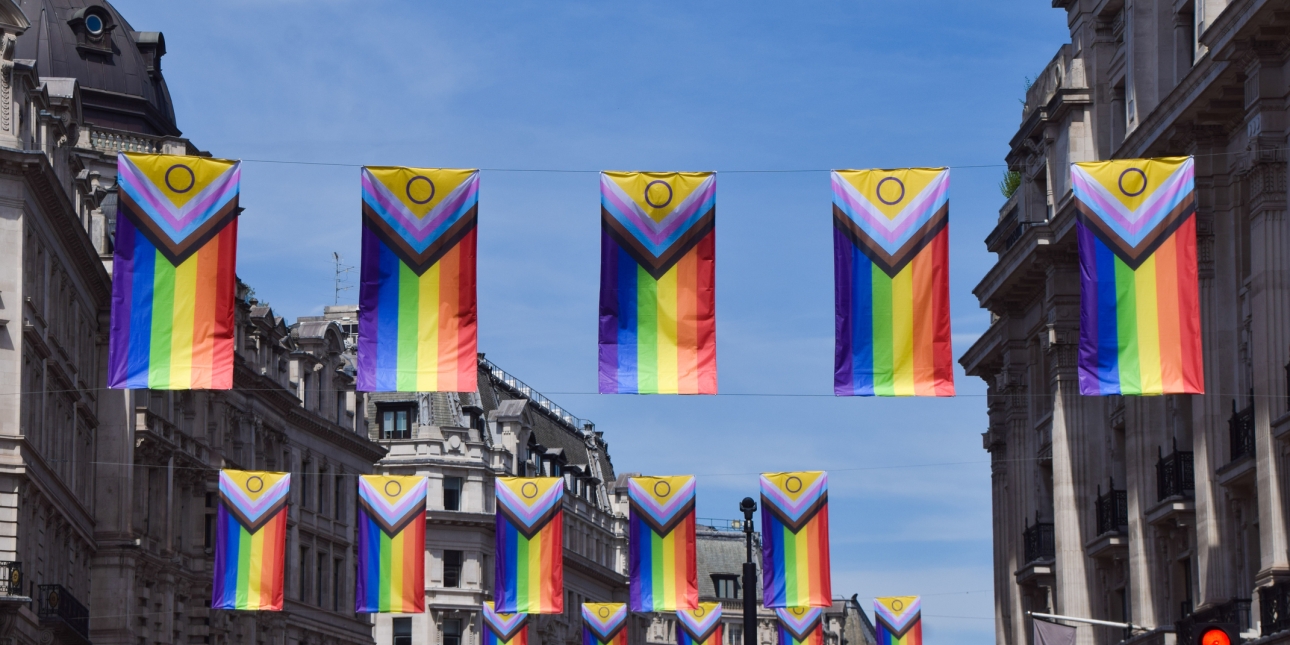9 things companies need to do before flying the rainbow flag
It’s Pride month – but how can your organisation tread the line between co-opting a movement for monetary gain and using its platform to create genuine change?
Here are some of my reflections as a bisexual woman (she/her) working in inclusive communication, media and PR on what companies need to do before they fly the rainbow flag across websites and social media platforms.
A very short history of Pride:
Pride is a global movement fighting for equal rights for LGBTQ+ people all over the world. June marks the anniversary of the 1969 Stonewall Riots in the US, which catalysed global LGBTQ+ activism. Alongside protesting LGBTQ+ oppression, it is also time for the queer community to come together a celebrate their identities with pride.
‘Rainbow washing’ is widespread
But, as with any ‘awareness-raising month’, for companies there is a fine line between co-opting a movement for monetary gain and using its platform to create genuine change.
Pride is no different and ‘rainbow washing’ (“the collective effort from brands across industry and locale to appeal to LGBTQ+ consumers through marketing”, as described by diversity, equity and inclusion strategist and consultant Lily Zheng), has been prevalent since the 80s.
Representation and awareness raising is important – but not if it’s a fleeting attempt to capitalise on the LGBTQ+ wealth without doing any groundwork to build trust and genuinely value this beautiful community.
9 things to do before flying the rainbow flag
“Take stances, make sacrifices, and invest in us without any immediate promise of reciprocity because these efforts build trust” – Lily Zheng
- Educate staff about the history of Pride, Stonewall riots and the LGBTQ+ community – this is an excellent way to support LGBTQ activists by paying them for their expertise, instead of expecting people to come forward and relive past traumas for free.
- Find ways to provide this education all year round. Try adopting inclusive language tools that flag exclusionary language, having yearly EDI training refreshers (not just in June!) or by buying awareness-raising books by LGBTQ+ authors, following LGBTQ+ creators etc. (I’ve included my recommendations in the links below.)
- Create inclusive workplace policies and cultures that support LGBTQ+ workers all year round. For example, create an environment where pronouns on email signatures or Slack messages are the norm.
- Build or invest in products and services that address the specific needs of the LGBTQ+ community.
- Donate to LGBTQ+ charities.
- Avoid creating unmanageable workloads for the LGBTQ+ community by expecting them to provide unpaid labour in the form of “working groups” or free talks about their lived experience. Build inclusion into performance reviews and allocate time each month for individuals to do this work within their working hours.
- Use inclusive imagery all year round. Vice have a beautiful collection of images called the Gender Spectrum Collection: Stock Photos Beyond the Binary.
- If LGBTQ+ people become part of a communication campaign, companies have a duty of care to provide them with support and protection. This might look like social media support deleting harmful comments in videos (Ben Pechey speaks about this in their post about safeguarding) or providing them access to mental health support.
- Only create and share case studies once you have done this work, so you can share your commitments publicly and transparently. Be honest about where you can improve and what steps you will be taking next year to build on your work so far.
In short, this all takes effort – and it should. Flying a rainbow flag is easy, inclusion is hard. It involves investment, strategy, and hiring people with expertise.
Spend money here, before you pay a designer to update your company’s logo with a rainbow flag, a copywriter to write a Pride post or an advertiser to build an LGBTQ+ focused advertising campaign.
I say this as someone who works in communication. Reinvest some of your comms budget into EDI projects. Then speak to strategists to help communicate your organisations commitment.
The library is open
Education is key and is always the first step within any diversity and inclusion strategy. Many of the resources (a collection of my current favourites) are either free or support LGBTQ+ researchers, activists, publications and creators.
Books
- “Bi: the hidden culture, history and science of bisexuality” – Julia Shaw
- “The A-Z of gender and sexuality: from Ace to Ze” – Morgan Lev Edward Holleb
Articles
- 7 mind-blowing facts you probably never knew about the LGBTQ+ Pride movement – Pink News
- The colorful history — and precarious future — of rainbow washing, Marketplace
Series to watch
- Heartstopper – pure queer joy that explores young LGBTQ+ love and friendship, Netflix
- It’s A Sin, Channel 4
- Pose – BBC iPlayer
People/ organisations to follow on Linkedin
- Lily Zheng, diversity, equity and inclusion strategist and consultant
- Paff Erva, Marketing and EDI expert, founder Take Up Space
- We Create Space, global community platform for queer leaders, change-makers and LGBTQ+ allies
Emily Horton is a journalist, public relations expert and founder of communication consultancy More Diverse Voices. Read the original post, which includes a cover photo from Vice's Gender Spectrum Collection: Stock Photos Beyond the Binary.

.gif)
